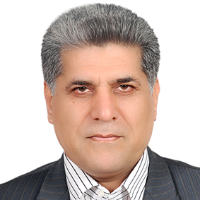Evaluation of the effect of growth regulators on the micropropagation process of medicinal plant (Momordica charantia), and identification of secondary compounds of different organs using GC-MS
Karela (also known as Bitter melon or bitter gourd) is a tropical annual plant of the Cucurbitaceae family with the scientific name Momordica charantia. Due to the plant's complex chemical structure, industrial production of many of its useful compounds is not feasible. Therefore, propagation using in vitro culture technology is an efficient method for increasing these valuable compounds by optimizing various factors and compounds in the culture medium. Various factors, including plant hormones, genotype, and temperature, as well as the plants' response to in-vitro activities, as well as the response of plant cells and tissues to hormonal balance during cultivation and propagation, influence the success of in vitro organogenesis. In general, the control of differentiation processes depends on the presence of auxin and cytokinin, as well as their equilibrium and interaction, which results in the production of aerial parts and roots. Traditional medicine recognizes karela as a distinctive and valuable plant due to the presence of its valuable constituents. Using various techniques such as gas chromatography (GC) and mass spectrometer, some of these compounds have been measured, identified, and introduced in extracts of cell suspension, root, leaf, and fruit.
In order to study the micropropagation of Karela plant, certified seeds were obtained from the DURGA company in Chandigarh (India) and transferred to the University of Zabol's tissue culture laboratory. The seeds were washed with running water and a few drops of liquid dish soap for 15 minutes before being rinsed three times with distilled water. under a laminar airflow hood, seeds were immersed in 70% ethanol for 60 seconds, followed by 0.1% mercuric chloride for 240 seconds, and then rinsed in distilled water. Calluses obtained from the optimal combination were transferred to culture medium containing varying concentrations of BAP (1, 2, 3, and 4 mg/L). The cultures were incubated at 28°C with 2000 to 2500 lux of light and a 12-hour light/12-hour dark cycle.In order to determine the secondary metabolites, plant extract, cell suspension, roots, leaves, and fruits were ground with liquid nitrogen and subjected separately to ethanol (96%) and distilled water for 72 hours. Using GC-MS, the Compounds of ethanolic extracts from control samples and tissue culture treatments were identified (Agilent, USA). On the basis of the results-obtained curve, the presence of secondary compounds in various plant parts was determined. The experiment was conducted using a completely random design with three replications, and the data were analyzed using SPSS 22 software. The F test was used to analyze variance, and the Duncan's multiple range test was used to compare means at a 5% probability level.
Induction of callus from germinated seeds began after 10 days in MS medium containing various concentrations of 2,4-D (1, 2, 3, 4, 5, and 6 mg/L), whereas no callus was induced in the absence of 2,4-D. There was a significant difference between these treatments in terms of callus production, with the highest callus induction occurring at 3 mg/L 2,4-D.Calluses obtained from the best concentration of 2,4-D were transferred to regeneration MS medium containing different concentrations of BAP and NAA (0.1mg/L). The results showed that the number of stems per callus increased with increasing amounts of BAP, up to 2 mg/L, and the highest number of stems per callus was obtained in the culture medium containing 2 mg/L BAP. Due to the inhibitory effects of this growth regulator on the regeneration process, The addition of BAP at concentrations greater than 2 mg/L decreased the rate of shoot regeneration.The evaluation of secondary metabolites revealed that the highest concentration of active substances (46 compounds) was found in the fruits of plants grown in tissue culture, which may be due to the physiological changes of the plant as well as the presence of numerous precursors in the in vitro culture medium. This issue can be caused by the ripening of the plant as well as the natural inherent process of transferring effective substances from other organs to the fruit in the fruit filling phase.
The use of 3 mg/L 2,4-D led to the highest percentage of callus formation, and 2 mg/L BAP led to the highest percentage of regeneration, according to the results. Among the various explants, including leaves, roots, and fruits, it was discovered that the fruit contained the greatest number of secondary metabolites and, due to its high performance, can serve as a significant source for extracting effective substances. In addition, the roots had the highest concentration of effective substances, making them a suitable platform for investigating the role of the compounds used in the culture medium on the type, concentration, and extraction of effective substances, and aiding in a proper understanding of the tissue culture and micropropagation effects on the over-expression and formation of secondary metabolites in karela plants.
- حق عضویت دریافتی صرف حمایت از نشریات عضو و نگهداری، تکمیل و توسعه مگیران میشود.
- پرداخت حق اشتراک و دانلود مقالات اجازه بازنشر آن در سایر رسانههای چاپی و دیجیتال را به کاربر نمیدهد.



